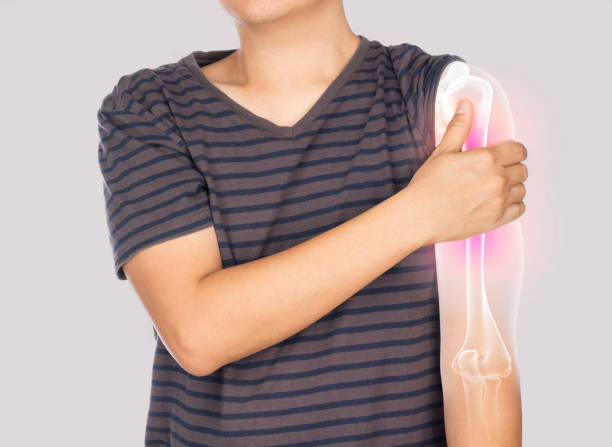How do you know when carpal tunnel is severe?
When you experience prolonged hours of numbness, pain, and tingling in your fingers, rest assured that your carpal tunnel is severe and needs urgent medical intervention.

Carpal tunnel syndrome occurs due to excess pressure exerted on the median nerve. Your median nerve runs along your arm and passes through your wrist (via the carpal tunnel) before ending in your hand.
The median nerve plays a significant role in controlling the feeling and movement of your thumb. It also helps move your fingers freely except for your small finger (also known as a pinkie). Read on to understand the anatomy of your carpal tunnel, what causes carpal tunnel syndrome, its symptoms, diagnosis, treatment options, and prevention.
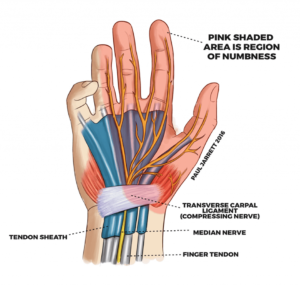
Your carpal tunnel is that narrow passageway located inside your wrist. This particular structure is about one inch wide. The sides and floor of your carpal tunnel are made of small wrist bones, commonly known as carpal bones. On the other hand, the roof of your carpal tunnel comprises the transverse carpal ligament or a band of connective tissue.
As one of the main nerves within your hand, the median nerve stretches from the neck and other nerve roots. These nerve roots fuse to form one major nerve in your arm. The nerve allows your hand to have a sense of touch and feel. It also controls a set of muscles found at the base of your thumb. Up to nine tendons pass through your carpal tunnel, and they are collectively referred to as flexor tendons.
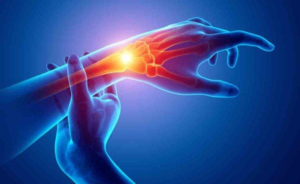
A combination of factors is responsible for causing carpal tunnel syndrome. As a matter of fact, more women and older people are at risk of developing carpal tunnel syndrome than men. So, your age could be a major factor that may contribute to the development of this condition. Other factors that can cause carpal tunnel syndrome are as follows:
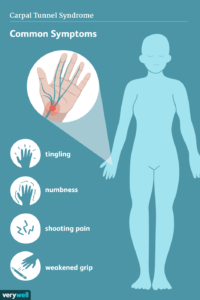
Common symptoms of carpal tunnel syndrome include:
Symptoms associated with carpal tunnel conditions often start gradually even without experiencing any injuries or damage to your wrist and hand. Your symptoms may appear and disappear without treatment. When these symptoms get worse, you may experience them more frequently for a long time.
There are also nighttime carpal tunnel symptoms. Nighttime symptoms can occur when you sleep with your wrist bent. These symptoms may also awaken you from sleep. During the daytime, these symptoms occur when you are holding an object for a relatively long time with your wrist bent backward or forward. This is common, especially when driving, reading a book, or using a phone. Some patients find that shaking or moving their hands helps with their carpal tunnel pain relief.
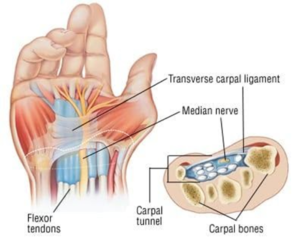
The main reason you may need to undergo carpal tunnel release is if the symptoms worsen or become constant or painful or chronic for more than 6 months. The doctor will suggest that you try non-surgical treatment options before considering the surgical treatment procedure. Additional reasons for carpal tunnel release surgery are:
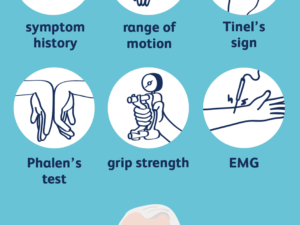
Your healthcare provider will perform different tests to rule out other health conditions that may be affecting your hand and wrist. The doctor will start by evaluating your medical history before performing diagnostic tests using these techniques:
After a successful diagnosis of your carpal tunnel problem, the doctor may take these two approaches in treating your condition:
With the non-surgical form of treatment, your caregiver may encourage you to use bracing or splinting during the night to prevent you from bending your hand or wrist. The doctor may further prescribe nonsteroidal anti-inflammatory drugs (NSAIDs) or suggest activity change, nerve gliding exercising, carpal tunnel relief exercises, or the use of corticosteroids or cortisone (steroid injections).
In some cases, an injection of cortisone into the carpal tunnel around the nerve, typically done under ultrasound guidance, can be performed to assist in temporary relief of symptoms. Also, injections into the carpal tunnel are performed to make a more accurate diagnosis if the symptoms or exam or diagnostic tests are inconclusive.
Carpal tunnel surgery may come in handy if non-surgical treatment options fail to relieve your symptoms. Therefore, your surgeon will perform surgical procedures such as open carpal tunnel release and endoscopic carpal tunnel release depending on the severity of your condition.
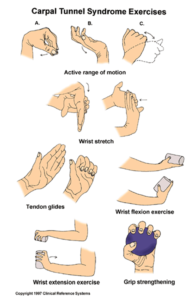
To date, there is no proven strategy to control or prevent carpal tunnel syndrome. Regardless of that, you may minimize stress on your wrists and hands using these helpful methods:
At Sforzo I Dillingham I Stewart Orthopedic + Sports Medicine, we are committed to providing world-class medical care to patients with carpal tunnel syndrome. Dr. Christopher R. Sforzo, and Dr. Christopher L. Dillingham, will help you by diagnosing and providing expert treatment for your carpal tunnel problem.
Our doctors are board-certified orthopedic surgeons and fellowship-trained in various types of surgeries that involve the arm, elbow, shoulder, forearm, hand, and wrist. They use minimally invasive surgical techniques, including endoscopic carpal tunnel release, arthroscopic elbow and wrist procedures, joint replacement, arthritis surgery, and reconstruction of spinal deformities, among others.
Carpal tunnel syndrome (nerve compression) is a medical term that describes one of the most common health problems affecting hands. Patients with carpal tunnel syndrome are likely to feel numbness, pain, tingling, and general weakness in their wrists and hands. Contact Sforzo | Dillingham | Stewart Orthopedics + Sports Medicine to learn more about carpal tunnel syndrome and its treatment.
When you experience prolonged hours of numbness, pain, and tingling in your fingers, rest assured that your carpal tunnel is severe and needs urgent medical intervention.
You may experience some pain, stiffness, and swelling after the operation. However, your doctor will prescribe medicines to relieve the pain.
The clinical success rate of carpal tunnel surgery ranges from 75% to 90%.
Depending on the individual, the recovery time may take 1-2 weeks or three months.
As healthcare is ever changing, Sforzo | Dillingham | Stewart Orthopedics + Sports Medicine, is doing things differently…






